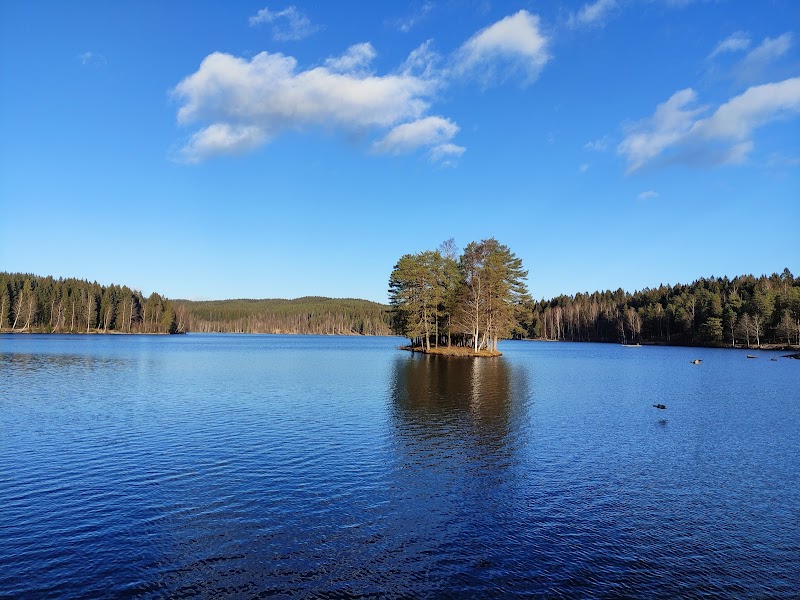
The Oslo Marathon offers an urban running adventure that threads through Norway’s lively capital, combining city streets, waterfront views, and green spaces into a single, dynamic race. Whether aiming for a personal best or soaking in the city’s energy, it’s an accessible yet invigorating challenge worth planning for.
Choose Responsive Running Shoes
The course includes pavement and light trail sections, so shoes with firm grip and cushioning will protect feet and enhance performance.
Plan Hydration Strategically
Hydration stations are spaced every 5 kilometers; consider carrying a lightweight hydration pack, especially on warmer race days.
Dress in Layers
Early fall mornings can start cool and warm rapidly; layering enables quick temperature adjustment without overheating.
Arrive Early for Starting Zones
Arrival at least an hour before the start helps navigate crowded areas and find a comfortable starting position without stress.
Oslo Marathon: Navigating Norway’s Urban Running Pulse
Every September, Oslo transforms into a vibrant artery of motion as runners from around the world converge for the Oslo Marathon. This race isn’t just a test of endurance; it’s a chance to run through a city in motion, where fjords dare you to keep pace and parks push forward with leafy determination. The marathon route stretches 42.195 kilometers through Oslo’s varied landscapes—accelerating across flat urban streets, weaving past cultural landmarks, and flowing along the waterfront with scenic views that challenge your focus while rewarding your effort.
Starting near the iconic City Hall, racers surge forward beneath steel-blue skies into a rhythm set by cobblestone alleys and tree-lined boulevards. The route's terrain remains mostly smooth and even, making it accessible for runners of varying skill levels, though the gradual elevation gain of approximately 120 meters presents enough resistance to keep muscles alert and minds engaged. Forested trails beside the raceway encourage a brief mental step aside from the city’s pulse, while the wide stretches overlooking the Oslofjord open breathing space — the water daring you onward with its relentless current.
Preparation for the Oslo Marathon demands tactical attention. Footwear with firm grip and responsive cushioning will handle the varied surfaces from pavement to occasional patchy trails where the city edges into nature. Hydration stations pepper the route every 5 kilometers, but carrying a lightweight hydration pack or belt is wise for endurance and unpredictable weather. Speaking of weather, early fall in Oslo brings crisp air that blusters rather than bites, making layering essential without adding bulk.
Timing your effort around sunrise offers runners a cooler temperature and a soft, orange light that splashes across architectural contrasts—from modern glass facades to historic brickwork—registering in mental snapshots as much as in the feet’s steady pounding. The Oslo Marathon is more than a race: it is an exchange, a dialogue between runner and city where the path listens and insists on respect—not defeat.
Whether you’re a seasoned marathoner eyeing a new personal best or a casual runner embracing the thrill of a well-organized urban race, Oslo’s course is fiercely itself: approachable yet demanding, expansive yet intimate. It balances the grit of competition with the calm of nature, creating an adventure that sharpens senses and muscles in equal measure. When the finish line nears at the waterfront, the cheers blend with the rising sea breeze—a reminder that completing the Oslo Marathon is as much about connecting with the city’s pulse as it is about crossing the distance.
Nearby Trips
All Adventures
Boat Charters
Water Activities
Adventures near Oslo, Norway
Discover the unique and memorable adventures that make Oslo, Norway special.
Frequently Asked Questions
What’s the elevation profile like on the Oslo Marathon route?
The marathon features a gentle elevation gain of about 120 meters over its 42.195 km course. The climbs are gradual, mostly rolling hills rather than steep ascents, making it accessible for runners with moderate fitness levels.
Are there aid stations along the marathon course?
Yes, hydration and energy aid stations are placed roughly every 5 kilometers, offering water, sports drinks, and sometimes gels. Runners should still carry personal hydration if preferred, especially on warmer days.
Can I use city transportation to reach the starting area?
Absolutely. Oslo’s efficient public transit system, including trams and buses, provides excellent access to the City Hall area where the race begins. Many runners use public transit to avoid parking challenges and traffic.
Are there any notable landmarks along the route?
Yes. The marathon passes iconic spots such as Oslo City Hall, the Royal Palace, the lively waterfront near Aker Brygge, and lush park areas like Frogner Park, offering a mix of cultural and natural sights.
What kind of wildlife might runners see during the race?
While the bulk of the course is urban, runners may spot city birds like seagulls near the water, squirrels in park areas, and occasionally kestrels overhead, lending a subtle natural soundtrack to the race.
How do weather conditions affect the marathon?
September weather can be variable—expect cool mornings that warm by midday with occasional rain. Dressing in layers and preparing for light rain or wind will help maintain comfort during the race.
Recommended Gear
Running Shoes with Grip
Supportive, cushioned shoes with firm outsole to handle mixed urban and park terrain comfortably.
Lightweight Hydration Pack or Belt
Ensures optimal hydration between official stations without carrying bulky bottles.
Moisture-Wicking Layers
Keep temperature regulation efficient and prevent chilling after sweat accumulation.
Running Hat or Cap
Provides sun protection in summer training; needed less during the marathon's cooler weather.
Local Insights
Hidden Gems
- "Ekebergparken Sculpture Park, a short detour offering art and panoramic city views"
- "The Akerselva River trail, rich with urban wildlife and historic mills"
Wildlife
- "Urban foxes at dawn and dusk"
- "Common city birds including magpies and jackdaws near parks"
History
"Oslo Marathon course includes areas significant for their historical and architectural heritage, like the City Hall built after WWII and Vigeland’s sculptures in Frogner Park, reflecting Norway’s post-war identity."
